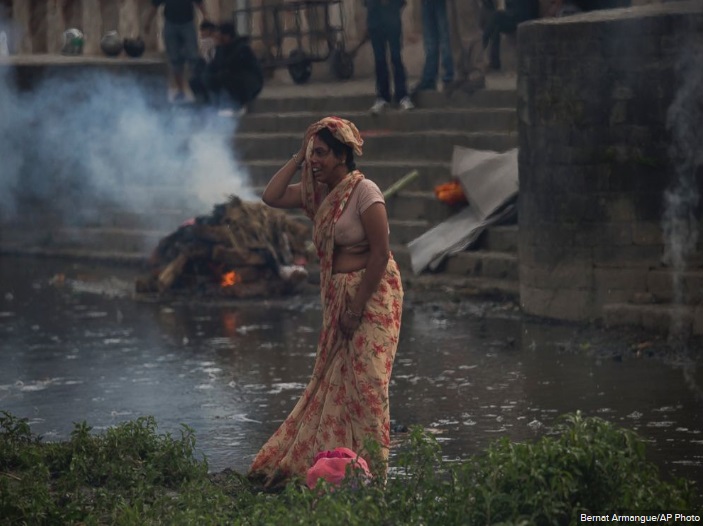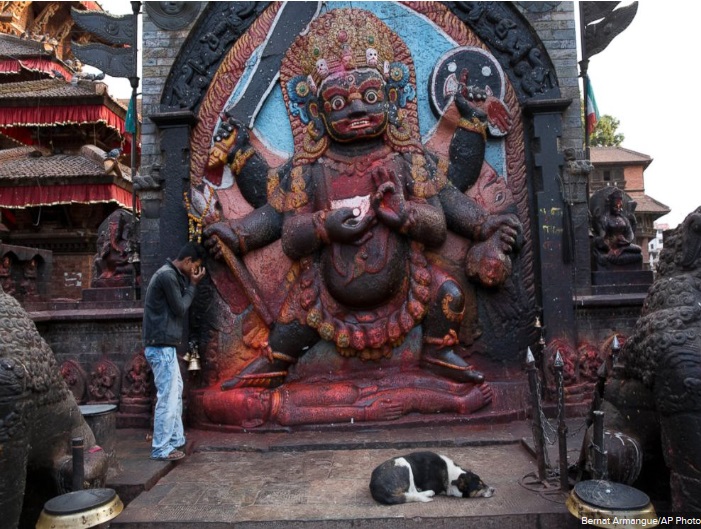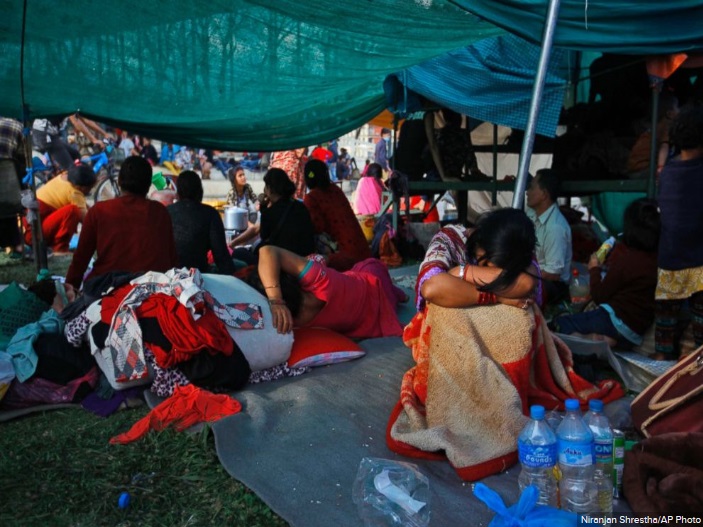An earthquake aftershock stronger than many earthquakes hit Nepal today, collapsing more buildings and triggering new panic in a country trying to recover from the most powerful quake to hit it in 80 years.
Many streets in Kathmandu were impassable, filled not only with rubble but with the injured and with people unwilling to go into any building, fearing the effects of another aftershock.
Tent cities sprung up all over the capital tonight, filled with people too afraid to sleep indoors.
The death toll in Nepal from the 7.8-magnitude earthquake rose to at least 3,218 people today, according to a Nepal police official.
"We don't feel safe at all. There have been so many aftershocks. It doesn't stop," Rajendra Dhungana, 34, who spent the day with his niece's family for her cremation at the Pashuputi Nath Temple in Katmandu, told The Associated Press. "I've watched hundreds of bodies burn. I never thought I'd see so many ... Nepal should learn a lesson from this. They should realize proper buildings should be built. There should be open spaces people can run to."
The aftershocks seemed to be weakening by late afternoon Sunday, although a magnitude 5.3 quake shook an area east of Kathmandu.
Aid groups have yet to reach many remote mountain villages, but they began receiving reports that suggested many communities perched on mountainsides were devastated or struggling to cope.
Landslides hindered rescue teams that tried to use mountain trails to reach those in need, Prakash Subedi, chief district official in the Gorkha region, where the quake was centered, told The Associated Press.
On Mt. Everest, at least 18 people were killed and dozens of others were injured in an avalanche triggered by the earthquake. There, too, teams were trying to get help to the injured, and trying to find a way to get back down.
Among at the dead on Everest were three Americans: Google executive Dan Fredinburg; California filmmaker Tom Taplin; and base camp doctor Marisa Eve Girawong from New Jersey.
In Kathmandu, throughout the city rescue teams were digging through the rubble of concrete slabs, bricks, iron beams and wood, looking anyone who might still be alive.
In one heroic effort, rescuers pulled a man through the window of a collapsed building as bystanders applauded, and a young girl was also pulled to safety.
"Most of them are suffering from head injuries," Dr. Santosh Poudel said.
Help from the United States is expected to arrive in Nepal Monday. A search and rescue team of 58 firefighters from Virginia is bringing along 45 tons of equipment to help the search for survivors. When they arrive, they will immediately begin looking for survivors in collapsed buildings.
A second search and rescue team, from Los Angeles, was also preparing to make the trip.
An additional disaster assistance team will provide humanitarian relief and determine future U.S. help. The C-17 taking the teams to Nepal was to refuel in mid-air multiple times to get them there faster.
According to the United Nations, nearly 5 million people were impacted by the earthquake, which was felt in India, China and Bangladesh.





